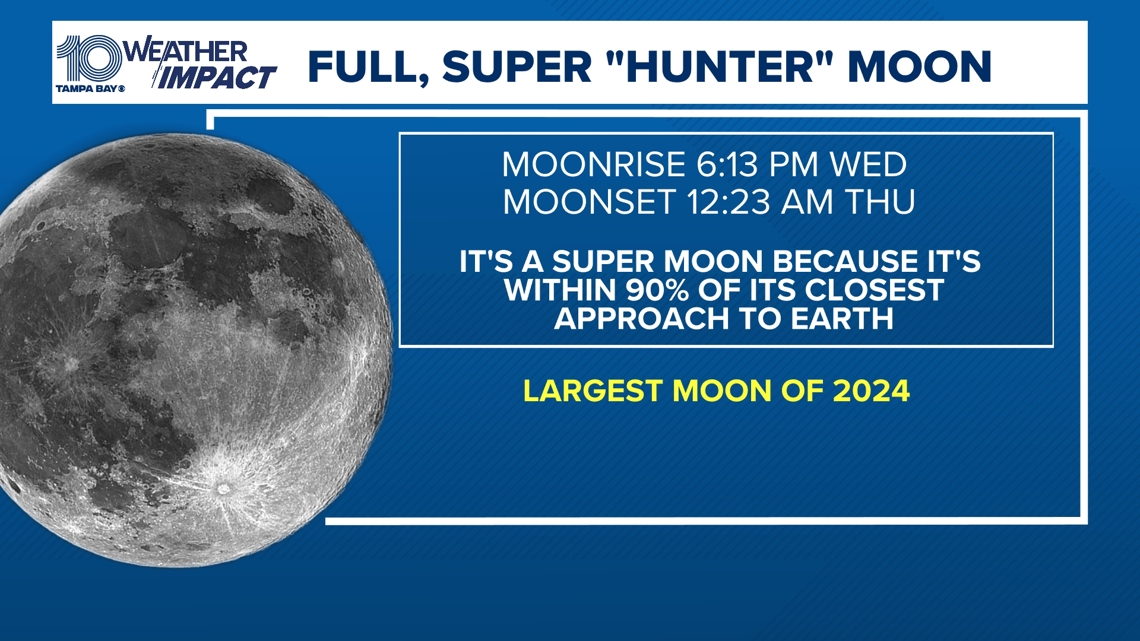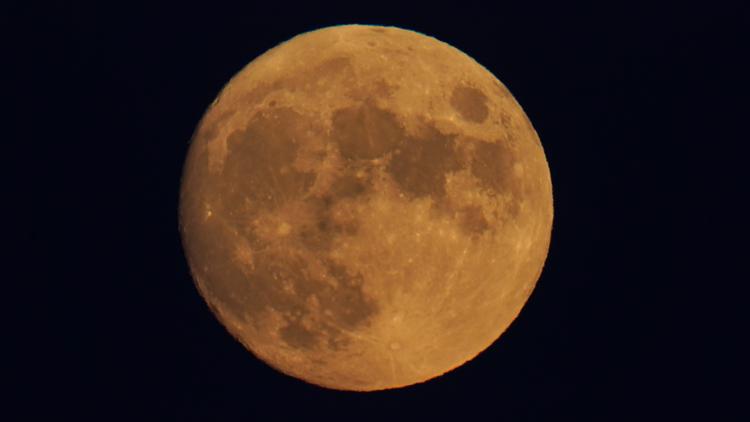ST. PETERSBURG, Fla. — If you look up in the sky over the next few nights, you'll see a beautiful, full moon. And if you think it looks larger and more luminous than typical full moons, you'd be right — it's a supermoon! Plus, it'll be bigger and brighter than the two previous supermoons we had in August and September.
There's good news, too if you're wanting to view the moon in all its splendor — the weather in the Tampa Bay area is expected to be pretty close to perfect for gazing upward.
According to our meteorologists, viewing conditions start good and then turn great as our skies go from partly cloudy on late Wednesday to mostly clear overnight into early Thursday morning.
If you're stepping outside to get a good view, you may need to grab a jacket — lows on Thursday are going to be in the 50s!
While you're gazing at the moon, you might catch a glimpse of a comet that's in the neighborhood. Discovered last year, comet Tsuchinshan-Atlas is now prominent in the Northern Hemisphere after wowing stargazers in the Southern Hemisphere. It'll be best viewed after sunset, but the moonlight will actually wash out some of the comet's tail.
According to NASA, October's full moon is called the "Hunter's Moon." The exact origin isn't known, but the term showed up in a dictionary from the 1700s. The Farmer's Almanac says with leaves falling and deer fattening up for winter, it's time to hunt.


What is a supermoon?
More a popular term than a scientific one, a supermoon occurs when a full lunar phase syncs up with an especially close swing around Earth. This usually happens only three or four times a year and consecutively, given the moon’s constantly shifting, oval-shaped orbit.
A supermoon obviously isn’t bigger, but it can appear that way, although scientists say the difference can be barely perceptible.
How do supermoons compare?
There’s a quartet of supermoons this year.
The one in August was 224,917 miles (361,970 kilometers) away. September's was nearly 3,000 miles (4,484 kilometers) closer the night of Sept. 17 into the following morning. A partial lunar eclipse also unfolded that night, visible in much of the Americas, Africa and Europe as Earth’s shadow fell on the moon, resembling a small bite.
October's supermoon is the year’s closest at 222,055 miles (357,364 kilometers) from Earth, followed by the November supermoon at a distance of 224,853 miles (361,867 kilometers).
Scientists point out that only the keenest observers can discern the subtle differences. It’s easier to detect the change in brightness — a supermoon can be 30% brighter than average.
With the U.S. and other countries ramping up lunar exploration with landers and eventually astronauts, the moon beckons brighter than ever.
What time is the full moon?
According to NASA, the October full Moon will be Thursday morning, Oct. 17, 2024, at 7:26 a.m. EDT.
The Associated Press contributed to this report.



